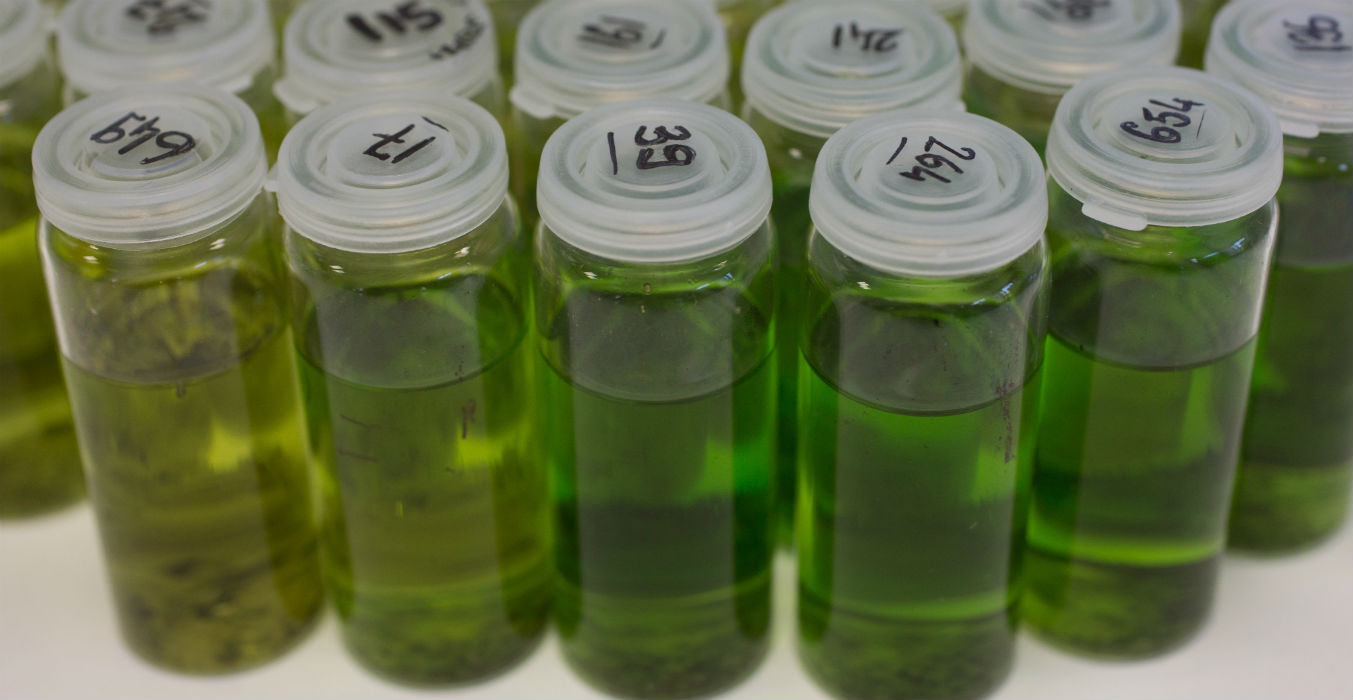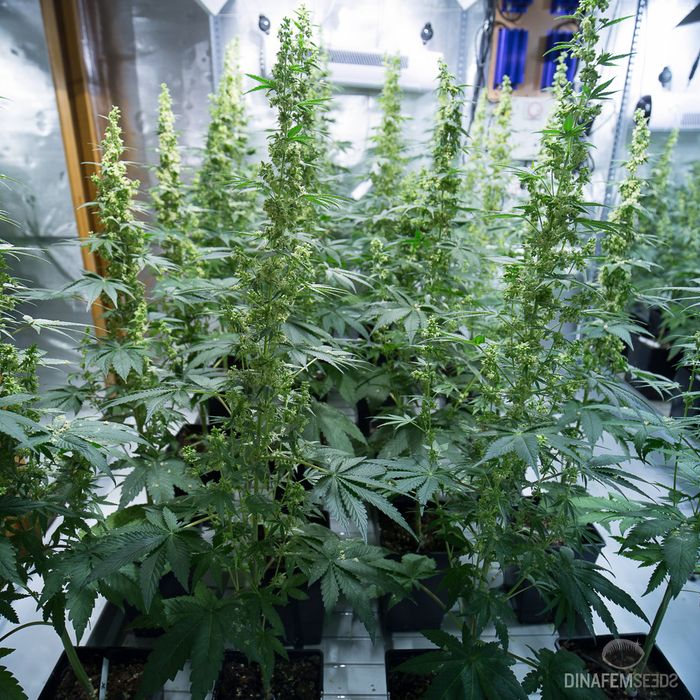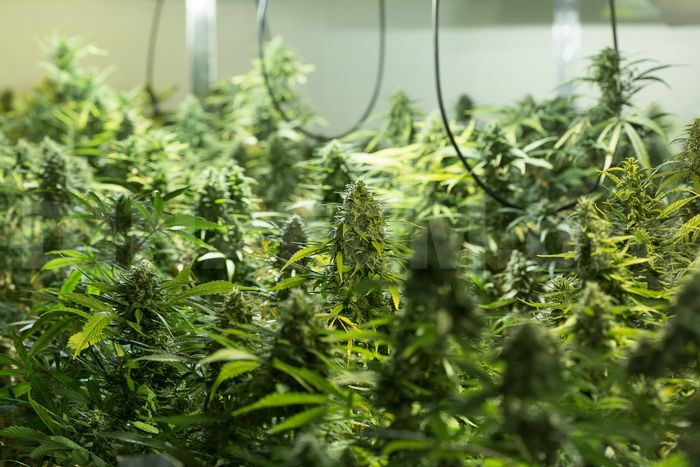- You might have heard the word ‘breeding’ every now and then, you might even now about breeders’ role in the cannabis industry but… Do you know what it really involves?
- Responsible for the recombination of the genes of plants in order to get new strains and market them, breeders are a central piece in the creation of cannabis varieties.
- Wanna get a behind-the-scenes look at the breeding process? Well, our technical team is here to help!

Responsible for the creation and improvement of strains, breeders are pivotal figures of seed banks. In an effort to learn more about this profession, we have talked to our team of breeders, the ones who really know what goes on behind the scenes. How are new cannabis strains created? What does this job really entail? Keep reading to find out!
What is a breeder?
Breeders are professionals that create cannabis strains whose traits stand out for some reason, bringing something new and different to the market. To put it simple, they seek to improve and diversify the existing cannabis strains. The parameters that define the traits that should be enhanced are very subjective though, as they respond to factors such as market demand and the economic profitability of the production process.
The varieties available in today's market are genetic recombinations of other strains created by breeders through selection processes. In that regard, one could say that breeders are the heart of seed banks, for without them there would be no new strains to market.
What makes a good breeder?
Patience: Breeding does not happen overnight, it is a long journey that may involve years of genetic selection procedures, with no guarantee of success. After months, even years of hard work, breeders might well find themselves at an impasse and realise there is no point in getting on with the process. A good breeder is patient and tenacious about his work, accepts defeat humbly and learns from his mistakes.
Discernment: Good breeders know which traits to select. When it comes to large-scale marketing, it is important to find a balance between personal taste and the preferences of consumers.
Sensory acuity: Breeding is done by eye, this is why good breeders should be able to assess the characteristics of plants through the senses. Sight, smell and even touch play a major role in genetic selection, as it is based on these senses that breeders decide which individuals to rule out. While it is true that the laboratories of seed banks such as Dinafem play a key role in today's breeding processes, the good eye of breeders remains an essential tool.
Experience: good breeders are not created overnight, it takes years of hard work to assimilate the necessary knowledge and skills.
What does the breeding process involve?
1. The breeder sets his goal, that is, the 'ideal plant' he wants to obtain, which he uses to select the parents - plants which resemble the ideal he is after as closely as possible.
2. Once he has selected the parental plants according to the desirable traits, he crosses them to obtain the first generation (F1).
3. He assesses the individuals of the F1 and selects the ones that most closely resemble the target plant. 4. The F1 individuals that exhibit the desirable characteristic are either inbred (crossed between them) or backcrossed (crossed with the parents), according to the specific goal.
5. The offspring of the F1, the second generation or F2, is assessed and the individuals with desirable traits are selected and crossed into the F3. The resulting third generation is normally a stable population, although in some cases - with autoflowering strains, for instance - a fourth generation may be necessary to ensure stability.

What do breeders look for when creating a new strain?
Vigour: This feature is one of the most appreciated one by breeders, as vigorous plants tend to grow bigger and produce higher yields.
Adaptability: With cannabis being grown all around the globe and in very disparate environmental conditions, adaptability is definitely something to consider.
Hardiness: Hardiness is the ability of a plant to survive adverse weather conditions such as cold or hot temperatures, humidity and drought.
Resistance to pests and diseases: Just as with hardiness, strains can be bred to be particularly resistant to certain pests and diseases.
Maturity: Controlling the maturity time of plants is a fundamental aspect of cannabis growing. Whether for producing fibre, flowers or seeds, knowing when a plant has reached maturity is key for harvesting.
Calyx-to-leaf ratio: Closely linked to the yield of plants, this is another feature breeders pay close attention to. When assessing this parameter, attention should be given to the colas, that is, the main buds of plants. A calyx-to-leaf ratio of 1:1 is poor, 2:1 is acceptable, 4:1/5:1 is good and 7:1/10:1 is excellent. A good calyx-to-leaf ratio is often synonymous with a good crop - in terms of quantity, not potency - and means less manicuring work.
Flower traits: For obvious reasons, this is one of the most important aspects in breeding, and different factors need to be taken into consideration:
- Shape
- Calyx size
- Colour
- Cannabinoid amount
- Cannabinoid profile
- Flavour and aroma
- Durability of the aroma and the cannabinoids
- Trichome typology
- Resin quantity and quality
- Resin persistence
- Drying and curing times
Shape of the leaves: This trait is important with regard to the plant's adaptability to the environment.
Morphology: A plant's phenotype depends on several factors, such as the environment and the growing conditions. That said, genes play a key role too, morphology being a major point to take into account in breeding.
Size: Determined by the growing conditions, the environment and the genetics, size is something breeders should always bear into account during the breeding process, particularly when creating strains that are well suited to indoor growing. In such cases, Sativa genetics are best avoided, as the resulting plants would grow too big, causing havoc in the grow tent.
Productivity: In today's increasingly competitive market, creating highly productive strains is a major focus for most breeders.
Potency: Although we are experiencing a gradual paradigm shift, increasing the THC levels has been a haunting obsession for breeders in the last decades. More recently, however, many breeding processes focus on increasing the levels of other cannabinoids, such as CBD.
Preliminary planning of breeding
Hybridisation opens the way also for undesirable genes - usually recessive - to form pairs and express their characteristics in the next generation. This is why breeders should clearly define their goals before starting the genetic selection procedure, and ask themselves these questions:
- What traits am I looking for?
- What traits am I looking for and have not been expressed in phenotype yet?
- What undesirable traits that should be eliminated do the plants exhibit?
The work of breeders consists precisely in eliminating the undesirable traits while fixing the desirable ones, trait fixation meaning that a given characteristic will be invariably expressed in future generations. This is why, so to speak, nothing new is 'created' through breeding, it all comes to the recombination, though limitless, of existing genes, which gives rise to new genotypes.
"Bear in mind that in the production of any new plant, selection plays all-important part. First one must get clearly in mind the kind of plant he wants, then breed and select to that end, always choosing through a series of years the plants which are approaching nearest the ideal, and rejecting all others."
-Luther Burbank (In James 1964)

The musts of breeding
Selection: Genetic selection is at the heart of all breeding processes. In the cannabis industry, these are based on Mendelian genetics, that is, on the analysis of the genetic patterns that are expressed in phenotype generation after generation.
Controlled pollination: It is of utmost importance that only the pollen of the parents selected by the breeder for their characteristics passes on the genetic information to the next generation.
Large samples: Obviously, results vary if the genetic selection is made from a large or from a small sample. The best plant out of ten specimens is less likely to differ materially from the rest than the best plant out of 1,000.
Alternatives: Using large samples for genetic selection requires having a big, covered space, plenty of time, dedication and money. Yet not all breeders have so many resources available. This is why many of them resort to early selection as an alternative, as seedlings take up less space than adult specimens and some basic traits such as vigour are already detectable in the first life stage of plants.
Breeding techniques
There is a wide range of methods for creating new strains:
Crossing: Also known as hybridisation, it is the mating of two different strains with special characteristics.
Inbreeding and segregation: It consists in crossing the offspring of the parental plants together, that is, the F1 or first generation, and in selecting the individuals of the resulting F2 that exhibit desirable traits. In short, it is the crossing of the best specimens of a filial generation with their siblings in order to gradually stabilise the desirable traits.
Backcrossing: It is the crossing of the individuals of a sufficiently stable generation with one of the parental plants in order to fix its desirable traits.
Recurrent backcrossing: It involves repeating a backcrossing so as to fix one or various desirable traits.
Trait fixing crossing: It is the crossing of two highly homozygous individuals in order to increase the frequency with which a given trait is expressed in the progeny.
Selfing: It is the self-pollination of a plant with a view to reducing genetic diversity and increasing stability.
Goals of breeding
- Breeding has many different applications and there are several reasons that might prompt breeders to engage in a genetic selection process:
- Improving and/or fixing the traits of a strain: Sometimes the progeny shows a trait that was not expressed in the parental phenotypes, but with the work of breeders it is possible to fix it so as to ensure it is invariably present in the future generations. This is why there are many versions of a same strain available in today's market.
- Creating a new strain: Market requirements urge breeders to be constantly on the lookout for new strains.
- Replicating a lost strain: A tricky task with no guarantee of success whatsoever. If, for whatever reason, the parents of a strain go lost, breeders may decide to gather all the genetic material available and try to replicate the lost genetic combination as accurately as possible. Although results can be very good, without the right lab equipment it is materially impossible to obtain the very same genetics. That said, hard work, repetition and lots of selection can lead to over 90% accuracy. It won't be the same genetics, but it will be close.
- Creating strains that are suited to different environments: Thanks to the great adaptability of the plant, cannabis is grown all around the globe, with millions of growers having the possibility to harvest excellent crops. In that regard, breeders can create strains that, because of their genetic characteristics, are better suited to certain environmental conditions than others. Dinafem's technical team, for instance, worked very hard in the creation of Critical+ 2.0, an improved version of Critical+ whose characteristics make it more resistant to humidity and, thus, well suited to harsher climates.
- Increasing the levels of certain components: Some cannabinoids have been proven to be useful in the medicine field, this is why much breeding effort has been invested in creating strains rich in cannabinoids such as CBD. While for many decades breeders have focused on increasing THC levels, the scientific research demonstrating the medicinal properties of CBD has resulted in an increased demand for pure CBD strains. Dinamed, the first pure CBD feminised strain in the world, is a good example of a long and laborious breeding process in that regard.



Comments from our readers
Read comments in other languages:
Did you like this post?
Your opinion about our seeds is very important to us and can help other users a lot (your email address won't be made public).